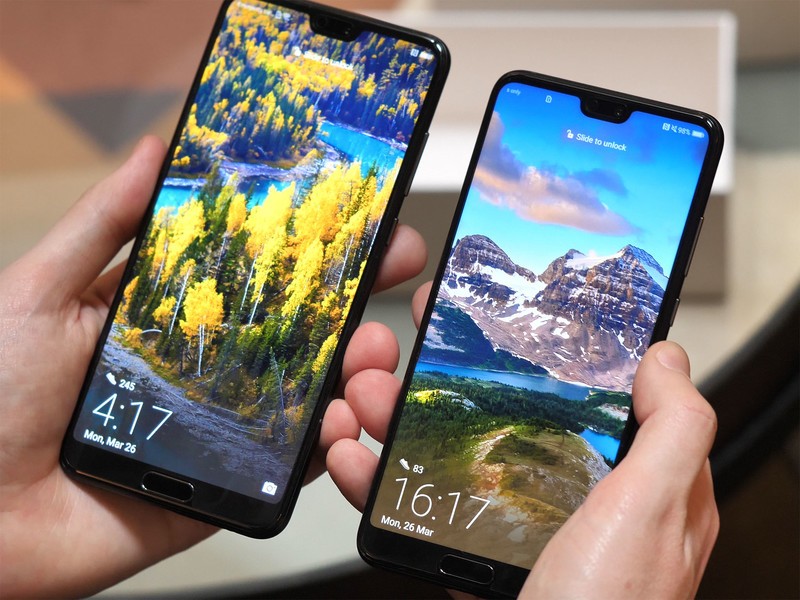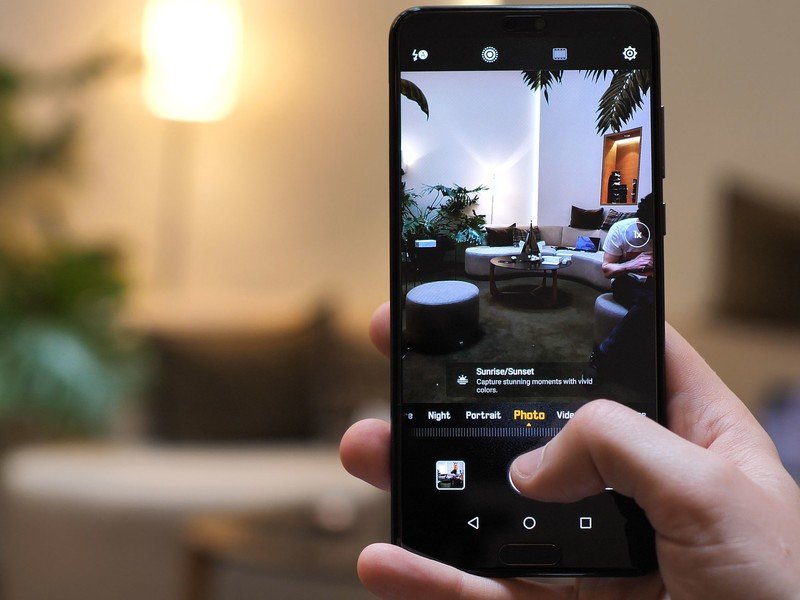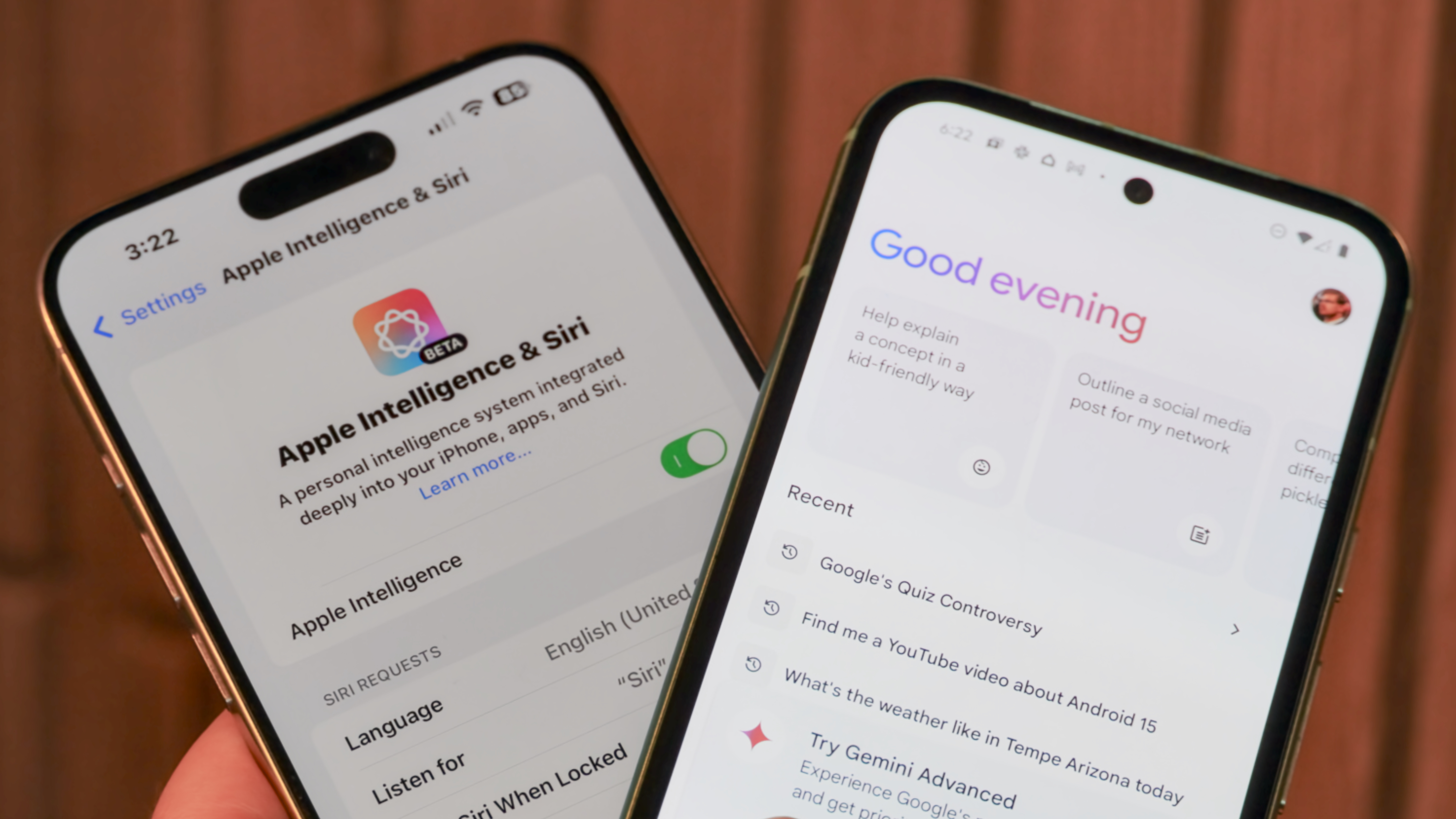Huawei P20 and P20 Pro hands-on preview: Triple threat

The most common criticism leveled at the hot new Android phone of the moment, the Galaxy S9, is that it's kind of a boring upgrade. Samsung did just enough to justify releasing a new model, and little more.
The perfect foil to that device, then, should be Huawei's P20 series. Just announced at a glitzy launch event in Paris, the P20 takes the core hardware of the Mate 10 Pro, encases it in shimmering curved glass, and equips it with a crazy new camera array, boasting a combined total of 68 megapixels across three sensors.
The P20 and P20 Pro represent a major departure from the design language of previous Huawei phones. It's all about the curves now, with beautiful mirrored finishes and glass panes that blend almost seamlessly into the metal frame.
There's a standard loadout of colors available: black, gold and blue. But the ones you'll really want are the stunning gradient finishes, which shift through colors on the vertical, and shimmer as they tilt through the light. We got some face time with the "twilight" gradient finish ahead of today's launch event, which shifts through turquoise, to blue, to purple. There's also a "pink gold" gradient finish for the P20 Pro.




The shimmering 'gradient' finishes on the P20 Pro are spectacular and ostentateous, but not gaudy.
It's reminiscent of what we first saw in the HTC U11 last year, and needless to say, looks spectacular. Whatever other issues you might have with the P20, it's hard to fault the aesthetics and build quality of the gradient-finished P20s. These are the best-looking Android phones I've used, and I've used pretty much everything.
As with previous models, the differences between P20 and P20 Pro go beyond the size of these devices.



The P20 has a 5.8-inch LCD panel, while the larger, more premium and much more interesting P20 Pro steps up to a 6.1-inch OLED. And yep, that's an iPhone-style screen notch up top. Notches are a thing now, and Huawei isn't the only manufacturer aping this iPhone X design trait.
Get the latest news from Android Central, your trusted companion in the world of Android
Yep, there's a notch. Nope, it's not that big of a deal.
Some people will hate the notch, but I don't find it all that distracting, mainly due to the way it's implemented. Neither P20 has an unnecessarily large display cutout -- they're just big enough to house the earpiece, sensors and a 24-megapixel front camera.
That front camera enables face recognition too, which we couldn't test ahead of launch, but which Huawei says can unlock the phone in as little as half a second. That's faster than the iPhone X, though it remains to be seen how well it'll perform in darker conditions. At least Huawei already has a decent track record in this area, with the impressive face recognition capabilities of sister brand Honor's new View 10 phone.
Both P20s run Huawei's Kirin 970 processor, of course -- the same chip that powers the Mate 10 Pro. In other areas, the spec sheets do diverge a little: You get an extra couple gigs of RAM in the P20 Pro (6GB, up from 4GB), as well as IP67 water resistance and a bigger battery.

The big P20 has the same battery capacity as the supremely longlasting Mate 10 Pro.
The smaller P20 is only rated IP53 (splash-resistant), which is disappointing considering that water resistance is such a table-stakes feature in a modern flagship.
The P20 should do fine with its 3400mAh cell, but the Pro steps all the way up to 4,000mAh. That's the same rating as the Mate 10 Pro, so given the other hardware similarities here, the P20 Pro should match the legendary battery life we've seen from that model.
More: Huawei P20 vs P20 Pro specs
And that brings us to the meat and potatoes of these phones: The unique camera setup that really sets the P20 series apart. The standard P20 has dual cameras, a 12-megapixel RGB shooter augmented by a 20-megapixel monochrome camera, with new, larger 1.55-micron pixels for improved low-light performance. These sit behind f/1.8 and f/1.6 lenses respectively.
But what's really unique is the absolutely bonkers triple camera setup of the P20 Pro. So let's zero in on what's going on in this cluster of components on the top left corner. The P20 Pro has a 20-megapixel monochrome sensor, like the regular P20. The main sensor is an enormous 40-megapixel unit, a huge sensor by smartphone standards at 1/1.7 inches. The third camera is an 8-megapixel 3X telephoto camera -- 8 megapixels at f/2.4, with optical stabilization.



The new three-camera array on the back of the P20 Pro is what really makes it special.
An array of extra sensors is onboard too, including a color spectrum sensor for more accurate white balance, alongside laser autofocus. The laser AF unit is just one of four ways in which the P20 Pro's cameras can focus, the others being phase-detection (standard for high-end phones cameras), depth focus -- by triangulation using the three cameras -- and contrast focus.
In a meeting ahead of today's launch event, Huawei also demonstrated how the NPU -- Neural Processing Unit -- in its Kirin processor can predict erratically moving subjects and keep them in focus, where competitors might quickly lose the subject. For example, a flower blowing in the wind, or kids and pets.
This combination of cameras (plus the NPU, of course) lets Huawei do quite a few unique things that we really haven't seen before in a smartphone camera. Thanks to the new telephoto lens and high-res main sensor, up to 5 times hybrid zoom is supported in the P20 Pro, up from 3X in the Mate 10 Pro. The combination of a high-res RGB sensor, plus monochrome, plus a true telephoto lens means the P20 Pro can eke out more detail from zoomed shots where other phone cameras might produce a blurry mess.


At the risk of jumping to conclusions before we give the phone our full review treatment, it's pretty clear to me that the P20 Pro has probably the best telephoto camera on any phone to date.
The 40MP main camera can help in low light too, in tandem with the AI hardware inside the Kirin processor. The P20 Pro uses a kind of pixel-binning, combining four pixels into one, equivalent to 2 microns in size, to work magic in darker conditions.
Huawei has expanded the number of scenes that can be recognized by its AI scene detection and the NPU has also been drafted in to help with a seriously impressive new night shooting mode.
Now, instead of having to stand perfectly still or use a tripod, Huawei's AI stabilization system can take continuous exposures -- up to four seconds -- and then use the NPU's intelligence to pull out a bright, clear image. What seems to be happening here is that the phone is continually pulling data from the camera, then using its AI capabilities to compensate for motion and perspective differences. It's not unlike the "HDR+ Enhanced" mode you'll find buried in the settings on the Google Pixel 2.
The results in the P20's night mode aren't quite the same as one long exposure -- nor are the results as instant as a regular photograph -- but in my brief time with the feature, it was impressive. If real-world use matches up with my first impressions, it could be a great option for the times when you have the opportunity to take a longer exposure, but don't want to carry around a tripod.

The P20 Pro can use AI and pixel-binning on a 40MP sensor for long exposures without a tripod.
We're just scratching the surface of what the P20 and P20 Pro cameras can do here. There are countless other features we didn't have time to fully test ahead of today's launch. To name but a few: AI composition assistance, which will nudge you towards improving the way your photos are framed. For instance, the P20 will be able to identify subjects in group shots and prompt you to fill out the frame appropriately. And for landscapes, it'll be able to find horizon lines and prompt you to align these for a more pleasing overall image.
And Huawei is onboard with 960fps slow-mo capture too, though like the Samsung Galaxy S9, this will be limited to 720p resolution. (The company claims the 40MP camera's pixel-binning, and ISO ceiling of 102400, also helps it avoid some of the low-light issues seen in rival slow-mo implementations.)



The software side of Huawei phones has always been a mixed bag, but at least now we're up to Android 8.1 in the new EMUI 8.1 build. Huawei of boasts significant performance improvements in this version -- responsiveness up 60% and smoothness up 50% compared to EMUI 8. Some of that seems to be thanks to a few slick new animations. Regardless, we'll have to wait for review time to judge overall performance.
EMUI 8.1 otherwise sticks close to what we already knew from previous software versions -- this is a highly customized version of Android, with a handful of weird quirks -- for instance, the way music player notifications are handed. (EMUI pulls colors from the app icon, not the album art, for reasons unknown.)
Other new features are mostly contained in the Gallery app, where Huawei's on-device AI can now tag more than 100 different types of photos, and rate and organize them using its own aesthetic score.

With the P20, Huawei is challenging the assertion that smartphones have become boring. It's doing so through glitzy, eye-catching hardware and envelope-pushing camera features. The P20 Pro in particular could be the perfect antidote to a relatively safe and unexciting upgrade from Samsung this year. The main questions to answer in our full review will be around software quality, and whether EMUI is still littered with nagging software issues.
And, of course, just how well the P20 Pro's whizbang camera features compare to the two Android camera champs from Samsung and Google.
Stay tuned.

Alex was with Android Central for over a decade, producing written and video content for the site, and served as global Executive Editor from 2016 to 2022.
